
From Stanford in Sex and the City to George in My Best Friend’s Wedding and even David in Schitt’s Creek, we’re overwhelmed with stereotypical depictions of gay men as witty, well-groomed, and well-spoken (and, unfortunately, disproportionately white). But as one Redditor recently asked, where does that trope even come from?
Other Reddit users readily replied with theories. “Gay men from the upper class or bourgeoisie were more likely to be ‘out’ for centuries,” one wrote.
Related: From fops to jocks: How gay stereotypes are changing faster than you can say Jack McFarland
Another pointed to media depictions from a more censored era of filmmaking: “Gays have often depicted as elite and/or humorous due to the Hayes Code established in Hollywood. Hysterical use of veiled references and inside jokes aimed at an audience a bit more sophisticated.”
How about we take this to the next level?
Our newsletter is like a refreshing cocktail (or mocktail) of LGBTQ+ entertainment and pop culture, served up with a side of eye-candy.
A third commenter attributed the stereotype to “societal pressures” that “invalidate the gay identity,” homophobia included. “So some gay men seek validation through achievement in professional careers and personal presentation,” that commenter wrote. “They feel like they need a greater amount of success to get the respect that society gives to straight man automatically.”
Replied another user: “This is a great answer! I’d like to say the same thing in a different way, that internalized homophobia, the fear of being rejected for being gay, and the whole host of circumstances that could drive gay men to be ostracized (which, in some aspects, remains in the gay community) can drive some people to strive for acceptance via secondary achievements as a sort of defense mechanism.”
That user continued: “Being funny, witty, and well-groomed are, to some extents, among the more readily accessible. Absorbing culture through reading, music, theater, movies are also good options, doing double duty as also being ways to deal with loneliness and boredom. Their appeal is also reinforced by being socially acceptable and even encouraged ways to differentiate oneself, and a source of validation by straight society.”
Related: Someone broke down every Disney villain as a gay stereotype and it’s perfect
Meanwhile, another Redditor cited the acclaimed book Gay New York: Gender, Urban Culture, and the Making of the Gay Male World, 1890-1940 by Columbia history professor George Chauncey. “Aristocrats were associated with effeminacy because they were a leisurely class that didn’t do hard labor like those hardy working men,” that Redditor wrote. “It was a show of status to be effeminate. When the middle classes started to form, they used the stereotype to discredit both aristocrats and homosexuality, because the nuclear family was all-important to their ideology. Working-class men usually referred to as ‘fairies’ and ‘pansies’ used the stereotype in the late 19th/early 20th century to give themselves status, and to this day, many queer men (including me) knowingly or not use it to give themselves culture and ‘class’ to make up for the middle-class male privilege they’ve been stripped of.”
For more about this stereotype — and how it robs gay men of the right to be “dull and humorless” — check out The Independent’s coverage of Ashley Brooks’ research into “ambivalent homoprejudice.”


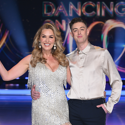
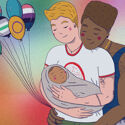



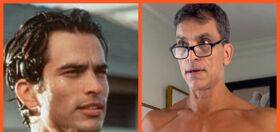
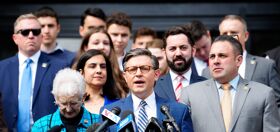



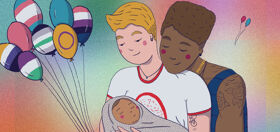

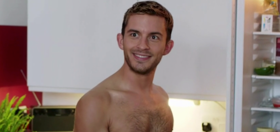
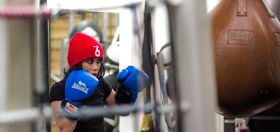


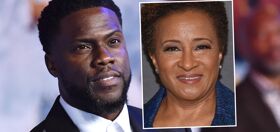
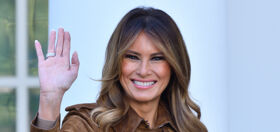
Donston
I suppose all of these answers have some truth. But I think it ultimately comes down to “gay” insecurities, social validation and the general flimsiness of the male ego. If you’re not gonna get validation by wooing women, by fitting in with the “straight” guys, by having a conventional hetero family then you must find it elsewhere. (Though a lot of “queer” males still aim for those things). So, many focus on being the smartest, most clever guy in the room. Or the most successful career wise. Or the best dressed. Or aspire to an amazing body. Or aspire to be masculine and “straight passing”. Or aspire to be the “subversive” and outrageous. Or (nowadays) aspire to the most followers and attention on social media. It’s all about maintaining ego and maintaining a relevant spot in society.
rand503
I think you are correct for the most part, but you seem to view these aspirations as shallow or trivial. I view them as the opposite.
At the risk of stereotyping, I would offer that gay men often have a strong attraction to beauty of all sorts. Whether it is in music (specifically classical music), art, antiques, architecture, landscape, other men, fashion, and even cuisine, we like the finest of them. It’s a reason so many of us have beautiful homes, dress impeccably well, and have the best etiquette.
Of course not all do. Me, I’m a horrible dresser. The worst! But on all other accounts, I fit the stereotype quite well. I do not find the ballet or the symphony trivial or shallow, and I admire a person who knows how to make himself look great in an outfit. In fact, I find great wisdom and intellectual heft in the arts. Some of the world’s greatest minds did! If you can understand the genius of Beethoven or of Rembrandt, you will understand there is nothing at all trivial or shallow about them. Appreciating them and trying to emulate them isn’t either.
Donston
I don’t think all those aspirations are inherently shallow or problematic. They can be though. If you’re using those things to sustain your ego or to hold back inferiority complexes it can spell trouble later in life. No matter identities or where you fit within the gender, romantic, sexual, affection, emotional, relationship spectrum- we’re all looking for validation and looking to either fit in or stand out. Most people are ultimately shallow. While ego and sociology drive us all to some extent or another. It’s how obsessed some can become with those things that can lead to problems and how much you depend on those these to maintain purpose.
gaym50ish
There really isn’t any mystery about it — it’s just Hollywood! Gay men are portrayed this way for the same reason that every white person in the movies lives in a ten-room suburban house.
Donston
Hollywood hardly started it, but they did push it and capitalize off of it. There were many “queers” in Hollywood from the beginning. And they’re arguably most responsible for pushing this stereotype. The question is why. You also have to ask yourself why these are still stereotypes today and why so many aspire to either live up to them or focus so much on undermining.
ozy
Disproportionately white men? What criteria is that based on?
The author does realise that all western countries are predominately white in ethnicity, right?
This racism against white people in general needs to endm its blatantly ridiculous to try and fight racism by being racist.
Tombear
The percentage of Gay men with 4 year degrees is about 60%. Contrast that to our straight counterpart at 20%.
Donston
Like a lot stats involving “queers”, that’s an extreme and probably very incorrect number. “Gay” men who are educated and financially successful are more likely to “come out”. While getting legit numbers when it comes to sexuality/orientation/identity is always going to be an impossible feat. I do however feel more “gay” men aspire to higher education. That might partially be about wanting to create independence and validation separate from your nuclear family, from where you grow up and from traditional hetero expectation. And not to fit more stereotypes, but it’s also a way to avoid manual labor.
revashayne
My theory is it has a lot to with politics. Historically left wing political parties like socialist and communist were anti- homosexual. They viewed gay men as effete bourgeois degenerates. A good deal of 19th century and pre ww2 literature contains characters that fit these stereotypes. Much of the left was just as homophobic as the right historically. They are more culturally influential; therefore, we see more of these stereotypes. Another source is that in the U.S. gay men are seen as having more interest in high culture such as opera,dance,art and music. However, millenial gay men are pretty much determined to kill off that stereotype and have us seen as base and crass just like the rest of society.
scotty
it’s because they know what some guys like. who doesnt like a little dress up now and again? hmmm?
Heywood Jablowme
The article mentions George Chauncey’s wonderful book “Gay New York” which I can recommend to anyone. If you have a vague impression that gay history started in 1969, you’ll learn a lot. And if you live in NYC you’ll find yourself walking a few blocks out of your way to look at some gay site from the 1890s.
C_Alan
It’s times like these I’m thankful for the clone look. It cuts through all the nonsense.